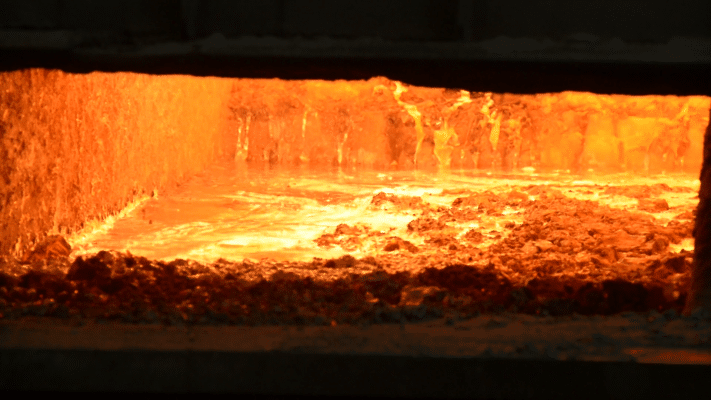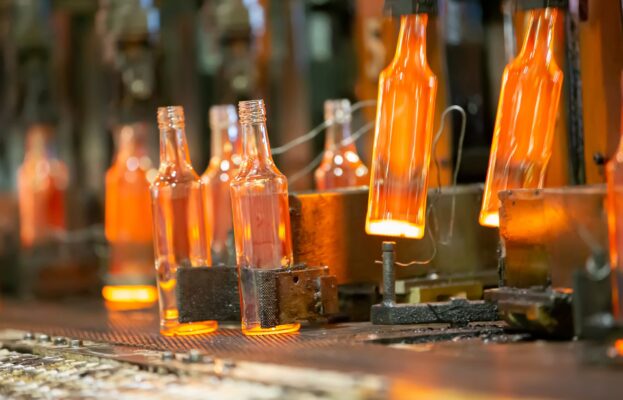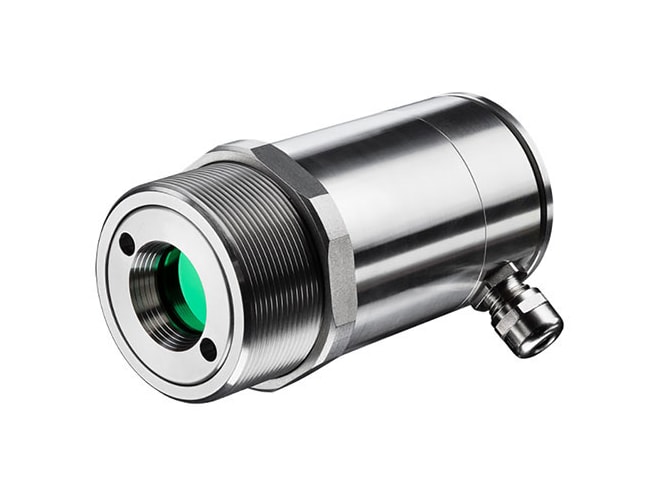Temperature Sensors For Glass Melting Furnaces
Temperature Measurement and Sensors in Glass Manufacturing
Precise glass furnace temperature control is the backbone of successful glass manufacturing operations. Even the slightest deviation from the ideal temperature range can compromise the quality and properties of the final glass product.
From intricate glass artistry to industrial glass production, understanding and managing furnace temperature is fundamental to the craft.
This guide explores glass furnace temperature measurement and the various devices employed in the industrial production process.
Process Parameters specialise in infrared sensors and industrial thermal imaging cameras for the glass manufacturing industry. If you’d like to find out more, speak to one of our dedicated team today.
Contact UsHigh Performance Series
High Performance Series
Compact Series
Understanding Glass Furnace Temperature
Glass furnace temperature refers to the controlled and regulated heat levels within the furnace, which are essential for melting and conditioning the raw materials used in glass production.
Maintaining precise temperature levels is crucial for achieving the desired viscosity, optical clarity, and thermal characteristics of the glass.
Glass Furnace Ideal Temperature
Generally, glass kiln temperatures range from 1,400°C to 1,600°C (2,552°F to 2,912°F). However, the ideal temperature for a glass melting furnace depends on the type of glass being produced and the specific requirements of the manufacturing process.
In the glass manufacturing industry, raw materials are mixed in a silo and then moved to a five-chambered furnace, where they melt at temperatures reaching up to 1600°C (2,912°F).
The molten glass is then floated on a bath of molten tin, which is maintained at a temperature of about 1000°C (1,832°F).

How Does a Glass Furnace Work?
A glass furnace operates by heating raw materials, typically silica sand, soda ash, and limestone, to extremely high temperatures in a controlled environment. The intense heat melts the materials, forming molten glass that can be shaped and moulded into various products.
Measuring the Temperature of a Glass Furnace
The measurement of temperature in the glass industry is fundamental to the quality of the finished product and is equally important whether the end product is sheet glass or moulded container products.
Temperature measurement within glass furnaces is done using non-contact sensors designed to withstand extreme heat conditions.
Common temperature measurement devices in the glass industry include thermocouples, resistance temperature detectors (RTDs), and infrared sensors.
Temperature sensors are used throughout the glass manufacturing process, enabling monitoring and control at critical stages.
They facilitate:
Furnace Temperature Monitoring
Ensuring precise temperature regulation within the furnace to facilitate efficient melting and refining of raw materials. This information is used to adjust the fuel flow to the furnace to ensure that the temperature of the glass is maintained at the desired level.
Glass Formation Temperature Monitoring
Monitoring temperature during shaping processes such as blowing, pressing, or drawing, ensuring optimal glass viscosity for desired shape formation. This information is used to adjust the speed and pressure of the forming process to ensure that the glass is formed to the desired specifications.
Glass Cooling Temperature Monitoring
Facilitating controlled cooling of glass to enhance strength and prevent thermal stresses.
Temperature Sensors for Glass Manufacturing
Measuring glass temperature can be challenging due to its transparent nature. One common method is using a non-contact infrared thermometer or pyrometer, which can measure the surface temperature of the glass by detecting the infrared radiation emitted from it.
Another approach is to use thermocouples or RTD sensors placed in contact with the glass surface to measure its temperature.
- Thermocouples are widely used in glass manufacturing due to their durability and accuracy in high-temperature environments.
- RTDs offer precise temperature measurement and are suitable for applications requiring high-accuracy readings.
- Infrared sensors provide non-contact temperature measurement, making them ideal for monitoring furnace temperatures without interfering with the manufacturing process.

Challenges in Temperature Management
Despite the advancements in temperature measurement and control technologies, glass manufacturers still face challenges in maintaining furnace temperature.
Factors such as sensor degradation, thermal gradients within the furnace, and fluctuations in energy supply can contribute to temperature variations.
Regular sensor calibration, furnace refractory maintenance, and energy management techniques are essential to overcome these challenges and ensure consistent temperature control.
What Are The Best Temperature Sensors for Glass Manufacturing?
In the glass industry, temperature measurement is vital for product quality, whether it’s sheet glass or moulded containers.
Process Parameters specialises in assisting with temperature monitoring across various glass manufacturing applications.
Flat Glass Manufacturing and Secondary Processing
Process Parameters offers the Optris PI Infrared Thermal Imaging Cameras, providing superior performance compared to traditional line scanners. With the PI Connect software, users can monitor processes effectively, ensuring temperature homogeneity critical for high-quality products.
These cameras are designed for industrial use, featuring an IP67 rating and optional cooling jackets for operation at up to 240°C.
Moulded Container Products
For glass container manufacturing, Process Parameters offers Optris PI Thermal Imaging Cameras and Infrared Temperature Sensors. These non-contact measurement solutions are fast and accurate, ideal for time-sensitive applications.
Cameras visualise and record processes in real time, while sensors ensure precise temperature measurement.
Other Glass Manufacturing Processes
Process Parameters caters to various glass manufacturing sectors, including light bulb production, glass fibre manufacturing, and glass recycling.
Our temperature measurement solutions accommodate diverse industry needs, including measuring temperature through glass.
About Process Parameters
Our team of experts here at Process Parameters will be able to assist you with choosing the right equipment for your specific applications.
Process Parameters was formed in 2004 as a UK-based manufacturer and distributor of temperature measurement and control equipment.
We have developed an enviable reputation for supplying excellent quality and value-for-money products to the glass industry and beyond.
For further information please email us at sales@processparameters.co.uk or call 01628 778788.
Send An EnquiryHigh Performance Series
High Performance Series
Compact Series
FAQs
How hot is a glass furnace?
Glass furnaces tend to operate between a range of 1,400°C to 1,600°C depending on the material used. Industrial glass furnaces can reach maximum temperatures of between 1700-2000°C.
What temperature does glass melt in a kiln?
Glass does not have a specific melting point, as it gradually softens as the temperature increases rather than undergoing a distinct phase change from solid to liquid. However, the softening point of most common glasses is between 600 to 900°C (1112 to 1652 degrees Fahrenheit). This temperature range can vary depending on the composition of the glass.
Related Knowledge Guides:
- Use of Temperature Sensors in Glass Manufacturing Process
- What is an RTD Sensor?
- RTD vs. Thermocouple: Choosing the Right Temperature Sensor for Your Application
- What Is A Temperature Sensor?
- What is a Thermocouple?
- How Does a Thermal Imaging Camera Work?
- Choosing an Infrared Pyrometer
- Why is a Pin Sharp Thermal Image Important?
- How Can a Thermal Imaging Camera Become Part of Your Process?
- Can You Improve Your Thermal Efficiency With Imaging Cameras?
- Comparing Contact and Non-Contact Temperature Sensors
- A Guide to Industrial Sensors




